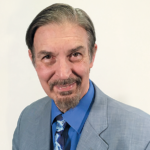Today marks the 30th World AIDS Day. It is a time to support those suffering from this ailment, remember those who have died from it and commit to finding a cure. It is also a time to reflect on how AIDS/HIV activists forced the U.S. Food and Drug Administration (FDA) to adopt a streamlined approach to its glacial drug approval process. Moreover, the millions suffering from Alzheimer’s, cancer, nd other debilitating and life-threatening illnesses and are blocked from access to treatments by the FDA should look to the example of those brave activists for their own path to a healthier future.
The AIDS/HIV epidemic exploded in this country in the 1980s, with no confirmed cases at the start of the decade to almost 75,000 diagnosed in the peak year of 1993. Because this was a new ailment, there were no known cures or effective treatments. Consequently, 50,000 AIDS/HIV sufferers died in 1995 alone.
As the crisis burst on the scene, researchers turned their attention to finding a treatment, but progress was blocked by the FDA, which by law must certify the safety and efficacy of medications before they are made available to most patients. This process, even in the 1980s, could take a decade or longer.
Because of the high mortality rate for that disease, AIDS/HIV sufferers simply couldn’t wait on a bureaucracy tied up in its own red tape. Emblematic of its idiocy, the FDA proposed classifying a home testing kit for the HIV virus — essentially a cup for holding a urine specimen that would be sent to a lab — as a Class 3 medical device in the same category as heart valves. A U.S. court of appeals shot this down, but more was needed to force the FDA to put patients first.
An alliance of activist groups organized to raise awareness of the disease and take political action. In 1988, thousands demonstrated at FDA headquarters in Maryland. They pushed every political button they could. This culminated in 1992 with a regulatory change, the “Expanded Availability of Investigational New Drugs Through a Parallel Track Mechanism for People With AIDS and Other HIV-Related Disease.”
Normally, the FDA mandates Phase I tests to certify the safety of a drug, Phase II clinical trials to determine its actual efficacy and Phase III tests to refine knowledge about dosage and best uses. But only a limited number of patients — a few hundred or thousand at most—are included in Phase II and III double-blind clinical trials in which half the patients receive the treatment and half a placebo.
On the Parallel Track, a medication still in those test stages could be made available to AIDS/HIV patients who did not respond to the limited number of treatment options at that time, years ahead of the normal wait. In 1992, the FDA made available in the Parallel Track the very promising anti-viral drug d4T (stavudine), which could extend life or delay the onset of AIDS for HIV patients.
In 1995, regulatory reforms and activist pressure led the FDA to approve saquinavir outside the usual double-blind clinical trials. That December, FDA approved nucleoside analogue medications for use with saquinavir. In the years that followed, new annual diagnosed cases of AIDS/HIV dropped from a high of almost 75,000 to some 40,000 today and deaths dropped from 50,000 to fewer than 20,000, still far too high, but a testament to the activists who lit a fire under the FDA.
Their success should compel all who suffer from Alzheimer’s, cancer, ALS and other debilitating, life-threatening ailments to ask, “Why can’t the FDA allow us speedy access to safe, promising medications like they do for AIDS?” The answer is, “FDA should and it can!”
Promoting an innovative certification policy that can expedite testing and approval is the Free To Choose Medicine (FTCM). This approach builds upon the Parallel Track approach for AIDS/HIV. Once a promising drug is certified safe and passes at least one Phase II efficacy trial, a manufacturer could opt to sell it at market prices on a dual, dynamic FTCM track. Patients, in consultation with their physicians, could then access these promising FTCM medications rather than waiting for years for drugs that pass the traditional FDA process. Japan has adopted FTCM for its regenerative therapies and China is implementing its own version as well. Why not the United States?
Each year more than 100,000 Americans die from Alzheimer’s, usually after years of debilitation and burdens placed on family and friends who care for their loved ones who sink into a frustrating night of forgetfulness. Unlike AIDS/HIV cases, which are declining, Alzheimer’s cases increased by 123 percent from 2000 to 2015.
Years ago, AIDS/HIV patients blazed a reform trail that drove the FDA to offer life-saving medications in a more timely and efficient process. This World AIDS Day Americans suffering from Alzheimer’s and many other ailments ought to follow the same path and demand access to the medications that they need. Today, FTCM is that path.
[Originally Published at The Hill]





